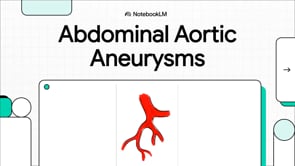This comprehensive review reveals that while osteosarcoma survival rates have stagnated for 30 years, new genetic understanding and immunotherapy approaches are bringing hope. Patients with localized disease have a 60% 5-year survival rate, but this drops to 20% for those with metastases. The standard MAP chemotherapy (methotrexate, doxorubicin, cisplatin) produces good response (≥90% tumor necrosis) in 55% of patients, correlating with 75% 5-year survival versus 45% for poor responders. Genetic testing shows approximately 25% of patients have cancer-predisposing gene mutations, opening doors for targeted therapies.
New Horizons in Osteosarcoma Treatment: What Patients Need to Know
Table of Contents
- Introduction to Osteosarcoma
- Staging and Prognosis
- Evolution of Osteosarcoma Therapy
- Treatment of Metastatic and Recurrent Disease
- Osteosarcoma Genetics and Genomics
- Immunotherapy in Osteosarcoma
- Clinical Implications for Patients
- Study Limitations
- Patient Recommendations
- Source Information
Introduction to Osteosarcoma
Osteosarcoma represents one of the oldest known cancers in human history, with evidence found in a 1.7-million-year-old hominin fossil from South Africa and even in a 77-million-year-old dinosaur specimen. Despite this ancient history, it remains a rare cancer today, with only 800 to 900 new cases diagnosed annually in the United States.
This aggressive bone tumor primarily affects children and young adults between 10 and 30 years old, with incidence peaking during adolescent growth spurts. The most common locations for osteosarcoma are areas of extensive bone growth: the knee (distal femur and proximal tibia) and shoulder (proximal humerus). Approximately 10% of cases occur in people over 60, often associated with Paget's disease of bone, which may represent a different biological process.
Staging and Prognosis
Most patients initially experience persistent bone pain that leads to imaging studies suggesting osteosarcoma. Diagnosis is confirmed through biopsy, and staging helps determine surgical approach and prognosis. The two main staging systems are the Musculoskeletal Tumor Society (MSTS) system and the American Joint Committee on Cancer-International Union against Cancer (AJCC-UICC) system.
Approximately 10-15% of newly diagnosed patients present with metastatic disease, primarily in the lungs. Survival rates differ dramatically based on disease extent:
- Localized disease: 60% 5-year survival rate
- Metastatic disease: 20% 5-year survival rate
A study of 2,260 patients with high-grade osteosarcoma identified pretreatment factors most associated with poor outcomes: presence of metastases and axial skeletal location. After treatment, factors contributing to poor survival include incomplete surgical resection and poor response to chemotherapy.
Evolution of Osteosarcoma Therapy
The cornerstone of osteosarcoma treatment remains surgical resection of the primary tumor. While radical amputation was once standard, limb-sparing procedures are now used in 90% of patients. These procedures involve complete tumor removal followed by skeletal and soft-tissue reconstruction.
Before chemotherapy was available, more than 80% of patients with localized osteosarcoma died within 2 years from metastatic disease, primarily in the lungs. A landmark 1982 randomized multicenter study demonstrated the dramatic benefit of chemotherapy. Patients receiving no chemotherapy after surgery had only a 17% 2-year progression-free survival rate, compared to 66% for those receiving MAP chemotherapy (high-dose methotrexate, doxorubicin, and cisplatin).
Current standard treatment for adolescents and young adults with resectable osteosarcoma includes:
- Neoadjuvant (presurgical) MAP chemotherapy
- Surgical resection
- Additional cycles of adjuvant (postsurgical) chemotherapy after recovery
For older patients, high-dose methotrexate is often omitted due to higher toxicity rates in this age group. Alternative regimens attempting to replace doxorubicin or cisplatin with ifosfamide, etoposide, or both have not proven superior to MAP for newly diagnosed patients.
Treatment of Metastatic and Recurrent Disease
Patients presenting with metastatic disease receive the same initial approach as those with localized disease: neoadjuvant chemotherapy followed by resection of both the primary tumor and all metastatic sites when possible. Surgical removal of all evident disease is associated with improved overall survival.
Most recurrent disease involves pulmonary metastases, requiring surgical resection. Common salvage chemotherapy regimens include ifosfamide and etoposide, though proof of improved overall survival with systemic therapy after surgical resection remains limited. Overall survival for metastatic or recurrent disease remains extremely poor, with long-term survival rates below 20%.
Osteosarcoma Genetics and Genomics
Genetic susceptibility to osteosarcoma has long been recognized in patients with Li-Fraumeni syndrome (TP53 mutation) or hereditary retinoblastoma (RB1). Recent research involving 1,244 patients with osteosarcoma but no family history revealed that approximately 25% had pathogenic germline mutations in cancer-predisposing genes.
The most frequent findings included:
- TP53 mutations in 4.4% of 1,004 patients
- Rare pathogenic variants enriched in DNA repair genes (BRCA1, BRCA2, BRIP1, CHEK2, RAD51, ATM, WRN, and RECQL4)
- Mutations in CDKN2A (cyclin-dependent kinase inhibitor 2A)
Osteosarcoma genomes show extreme complexity with extensive copy-number abnormalities and frequent disruption of tumor suppressors. The most frequent somatic mutations are in TP53, with the majority of tumors showing a TP53 null state. Mutations in cell-cycle regulators CDKN2A and RB1 are also frequent.
Unlike many other cancers, osteosarcoma lacks high-frequency activating mutations in signaling genes. Instead, equivalent gain of function occurs through gene amplification and overexpression. Several candidate pathways containing targetable genes have been identified:
- PI3K-mTOR pathway (PIK3CA, MTOR, and AKT1)
- Insulin-like growth factor (IGF) pathway (IGF1R)
- Vascular endothelial growth factor (VEGF) pathway (VEGFA and KDR)
- Platelet-derived growth factor (PDGF) pathway (PDGFRA)
- Cell-cycle pathway (CDK4, CCNE1, and CCND2)
Immunotherapy in Osteosarcoma
Harnessing the immune system to treat osteosarcoma represents a promising approach that could bypass the genomic complexity of this cancer. However, results so far have been mixed.
Immunotherapy for osteosarcoma dates back to 1891 when William Coley reported tumor responses using heat-inactivated bacterial toxins (Coley's toxins). A retrospective analysis of his data suggested benefit for osteosarcoma patients.
More recently, mifamurtide (muramyl tripeptide), a synthetic derivative of bacille Calmette-Guérin, was tested in a randomized phase 3 study. Initial reports showed no benefit, but follow-up data suggested adding mifamurtide to chemotherapy increased the 6-year overall survival rate from 70% to 78%. This modest improvement without clear statistical significance led the FDA to decline approval in 2007, though the European Medicines Agency approved it in 2009.
Studies of interferon alfa immunotherapy showed a 76% 3-year event-free survival rate but no significant difference between treatment groups. Immune checkpoint inhibitors have shown limited activity, with objective response rates of 5-10% in early-phase trials.
CAR T-cell therapy targeting specific antigens and adoptive cellular therapy with recombinant T-cell receptors have shown some promise, with one osteosarcoma patient experiencing a 4-month objective response after treatment with CD4+ T cells specific for melanoma-associated antigen A3 (MAGE-A3).
Clinical Implications for Patients
This research highlights several important implications for osteosarcoma patients:
- Genetic testing may identify predisposing mutations in approximately 25% of patients, which could inform family risk assessment and future treatment approaches
- The extreme genetic complexity of osteosarcoma means personalized treatment approaches based on individual tumor genetics may become increasingly important
- New technologies like patient-derived xenografts (PDX) may eventually allow testing of targeted therapies on individual patients' tumors before clinical application
- While immunotherapy results have been disappointing so far, combination approaches that modify the tumor microenvironment may enhance effectiveness
Study Limitations
This review acknowledges several limitations in current osteosarcoma research:
- The rarity of osteosarcoma makes large clinical trials challenging
- The genetic heterogeneity of osteosarcoma complicates targeted therapy development
- Many promising preclinical findings have not yet translated to clinical success
- Immunotherapy approaches have been limited by unfavorable tumor microenvironment conditions
- Practical challenges remain in implementing personalized medicine approaches, including obtaining adequate tumor samples and achieving clinically relevant turnaround times for genetic analysis
Patient Recommendations
Based on this comprehensive review, patients with osteosarcoma should consider:
- Seek comprehensive genetic testing: Both germline testing for inherited cancer predisposition and tumor genetic profiling may provide valuable information for treatment decisions and family risk assessment
- Discuss all treatment options: Include standard MAP chemotherapy, surgical approaches (limb-sparing when possible), and potential clinical trial opportunities
- Consider specialized centers: Treatment at centers with expertise in sarcoma management may improve outcomes
- Explore clinical trials: Given the lack of progress in survival rates over decades, participation in clinical trials investigating new targeted therapies or immunotherapies may offer access to promising new approaches
- Request tumor response assessment: The percentage of tumor necrosis after neoadjuvant chemotherapy (with ≥90% indicating good response) provides important prognostic information
- Long-term follow-up: Regular monitoring for recurrence and management of potential long-term treatment side effects is essential
Source Information
Original Article Title: New Horizons in the Treatment of Osteosarcoma
Authors: Paul S. Meltzer, M.D., Ph.D., and Lee J. Helman, M.D.
Publication: The New England Journal of Medicine, November 25, 2021
DOI: 10.1056/NEJMra2103423
This patient-friendly article is based on peer-reviewed research from The New England Journal of Medicine. It preserves all original data, statistics, and findings while translating complex medical information into accessible language for patients and caregivers.





